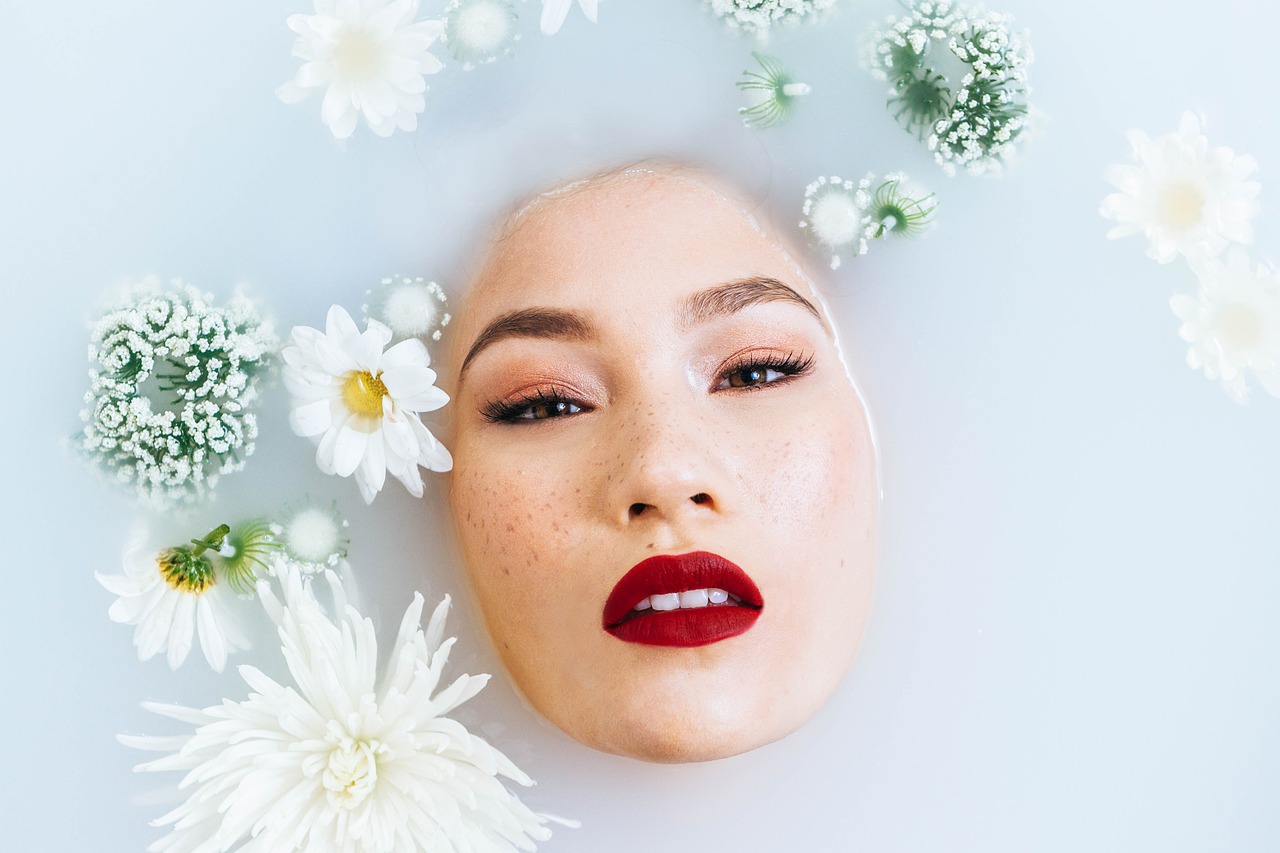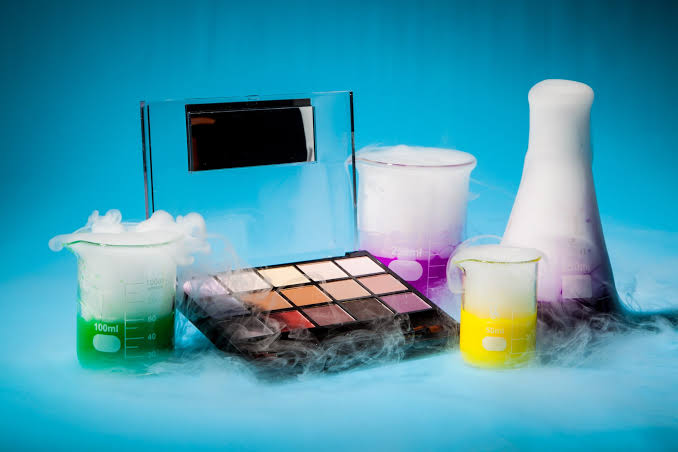All women love to buy beauty products, but did women know that they may harm themselves by buying some types of products that senior dermatologists warn of, because some products contain toxic chemicals that may harm your skin over the course of days, and in this article we will explain to you the most important toxic substances that some contain Beauty products to watch out for
- triclosan
First an insecticide, this antimicrobial chemical has made its way into personal care items since the 1960s. “Triclosan is added to soap, laundry, and even some clothes or cookware to reduce bacteria in products,” says Dr. Dendy Engelman, MD, a celebrity dermatologist in New York City. Now, due to its possible link to skin cancer and thyroid problems, the FDA has banned soap and other antiseptic products from using the ingredient.
The rule went into effect in September 2017. “Dial, Clearasil, and Bath and Body Works products
all contain this ingredient,” she says, adding: “Crest Pro-Health toothpaste and Ms. Meyer avoid this ingredient.”
- fragrance
Synthetic fragrances can certainly make your products smell delicious, but they are one of the biggest contenders for causing an allergic reaction on your skin. Dr. Engelman explains: “Fragrants are usually made up of other harmful chemicals such as parabens, benzene derivatives, aldehydes, and more that are linked to cancer and nervous system problems.
In the short term, they can cause irritation and redness in the area they are applied to. She recommends looking up these terms to give you evidence that the product contains fragrance: parfum, perfume, linalool, limonene, eugenol, citronellol, geraniol or cinnamal. Fragrance-free products are often described as such. “It Or Skin Protectant Fragrance Free Cream is great for increasing moisture and strengthening the skin barrier without putting yourself at risk,” Engelman says.
- Phthalates
These chemicals, commonly found in nail polishes, hair sprays, deodorants, perfumes, and lotions, are responsible for keeping products soft and pliable. That’s cool, but phthalates can also be incredibly dangerous. “There have been reports of phthalates being associated with various types of cancer, including breast, liver, kidney and lung, although a causal relationship has not been proven,” says Joshua Zeichner, M.D., director of cosmetic and clinical research in dermatology at Mount Sinai Hospital in New York. Keep your eyes open for products containing terms including the term “phthalates” to be safe. You can also find many newer products on the market that contain the term “phthalate-free” – buy plenty and stock up on them. “Restoria is a great brand that avoids all phthalates,” Dr. Engelman adds.
- Parabens
You’ve probably heard of the term, especially given the number of new products being launched claiming to be “paraben-free.” “Parabens are preservatives that are used in skin care products to prevent products from being contaminated while they are on the shelves,” says Dr. Zeichner. “Without preservatives, product ingredients, such as fresh fruits, will become contaminated with bacteria and viruses and over time become unfit.” Dr. Zeichner points to reports that have emerged (albeit inconclusive) linking parabens to breast cancer, as well as their negative impact on the body’s endocrine system. Parabens are also known to be skin sensitizers. “The good news is that there are a variety of paraben-free skincare products available,” he says. “They may include some grape seed extract, which is a natural paraben and offers similar benefits.”
- Avobenzone
The Environmental Working Group cites avobenzone as a safe sunscreen. However, research indicates otherwise. “Studies have found that avobenzone is converted to toxicity in the presence of Ultraviolet B and chlorine (such as when swimming in a pool during the day),” says Craig Kravert, M.D., board-certified dermatologist and chair of the AMART Board. For this reason, he says, it’s best to choose sunscreens that don’t contain avobenzone, such as Amartis Ultra-Fil sunscreen.
- sulfate
Frequently used as a surfactant, sulfates are the ingredients that clean skin and hair in cleansers and shampoos, Dr. Zeichner explains. They’re found in more than 90 percent of personal care and cleaning products, such as detergents. Sulfates such as (sodium lauryl sulfate) are known to cause irritation at their high concentration, and are even used as a positive control in trials to assess the extent of the product causing irritation.” Which is why you may start to see more sulfate-free skin and hair care products hitting the market. Dr. Zeichner recommends Neutrogena Naturals Purifying Facial Cleanser as a sulfate-free cleanser, as the entire skincare line contains only naturally-derived ingredients.
- formaldehyde
This colorless, non-flammable gas is commonly used to make home building products such as wood adhesives, particle boards, panels, furniture, and cabinets. It’s also an ingredient in some beauty products, including hair treatments and even nail polishes. “This chemical has been linked to cancer, as well as to other nervous system problems, such as chest pain, coughing, breathing problems, and respiratory irritation,” warns Dr. Engelman. Some hair-straightening procedures use this chemical during the process, and some nail polishes still contain formaldehyde, putting your body and the salon staff at risk.” She recommends looking for nail polishes labeled “3-free” or “5-free,” as they are formaldehyde-free. “Jensen nail polish is a great brand without formaldehyde,” she adds.
- hydroquinone
“This skin irritant is associated with altered immune function and increased malignancy in animals,” says Dr. Kravert. “On the other hand, arbutin, a natural cousin of hydroquinone with excellent brightening properties and an irritating appearance, is not associated with malignancy.” Derm-approved products that replace hydroquinone with arbutin include Kate Somerville Complex Correction Daily Discoloration Perfector, Amarty Aqua Lotion, and Erno Laszlo Luminous Intensive Cream.
- Poly-phenylenediamine
Also known as PBD, poly-phenylenediamine has been used in permanent hair coloring since the late 1700s. However, it has been banned in France and Germany (although the European Union has since allowed its use). In the United States, the Food and Drug Administration has approved its use in hair dye. “BDD is a frequent allergen,” warns Dr. Kraffert. “Temporary tattoos with BPD are becoming increasingly popular, and these tattoos are referred to as “black henna” and rely on the direct application of BPD to the skin.” Still, severe cases of allergic reactions occur quite often, sometimes with permanent negative consequences.
- microbeads
These microbeaded cleansers and cosmetics that you love to use are slowly being recalled and banned in the United States. “Microbeads are used as natural exfoliants in cleaning products and do a fair job, but the problem with microbeads is that they remain in the environment for many decades and have been linked to potential biosphere disturbances in aquatic environments,” says Dr. Kravert. “The good news is that there are plenty of natural exfoliators that work better — without the environmental baggage.” Dr. Kravert recommends Emirates Daily Exfoliator, the L1 that uses corn as a natural exfoliant instead of microbeads. “The product works delicately and deeply, all while being environmentally inert.”
- toluene
This type of petrochemical is mainly used to dissolve paint and thinning paint, but it is also a common ingredient in nail polishes and treatments, as well as hair bleaching products. The problem is that exposure to high levels of this chemical can lead to respiratory problems, as well as damage to the kidneys and liver, according to the EWG. Animal studies have linked toluene to these other health risks including impaired immune function.
- propylene glycol
You may find this ingredient listed on the back of many of your beauty products, including hair sprays, makeup, conditioner, shampoo, moisturizers, and even sunscreens. Propylene glycol is commonly used as a skin conditioning agent, however it has been linked to allergic conditions such as dermatitis and pimples, warns



Very nice post. I just stumbled upon your blog and wished to say that I’ve truly enjoyed browsing your blog posts. In any case I will be subscribing to your rss feed and I hope you write again very soon!